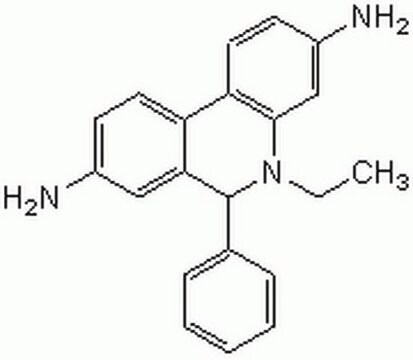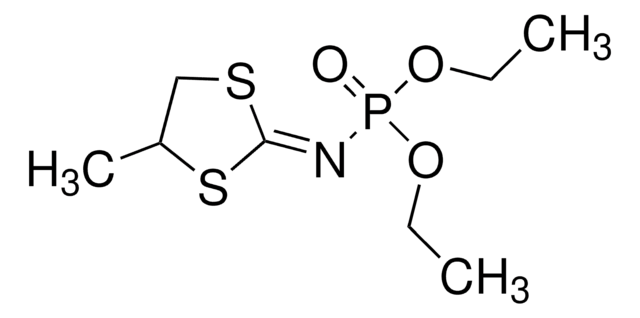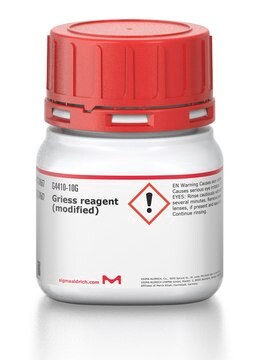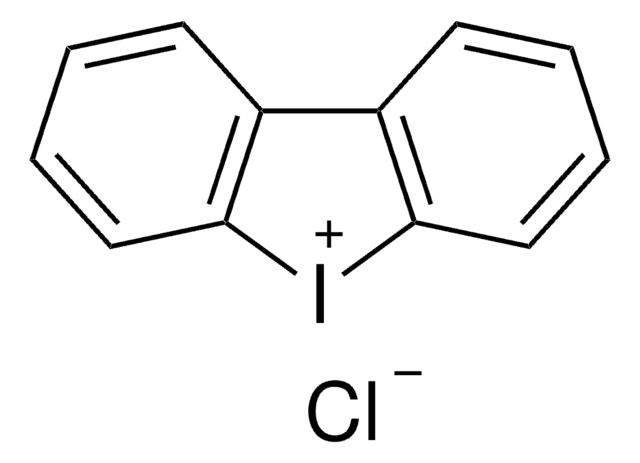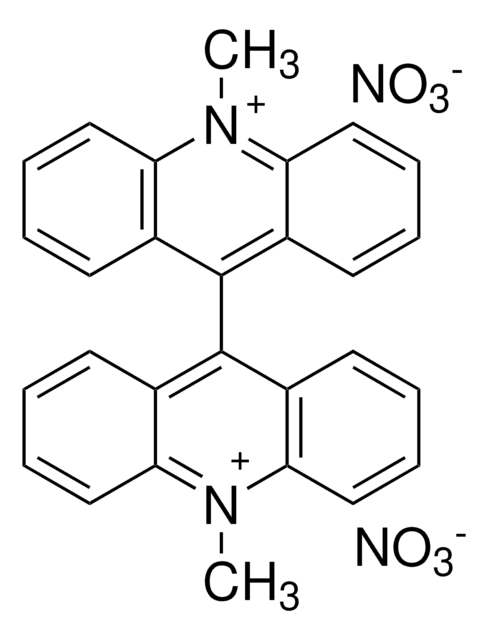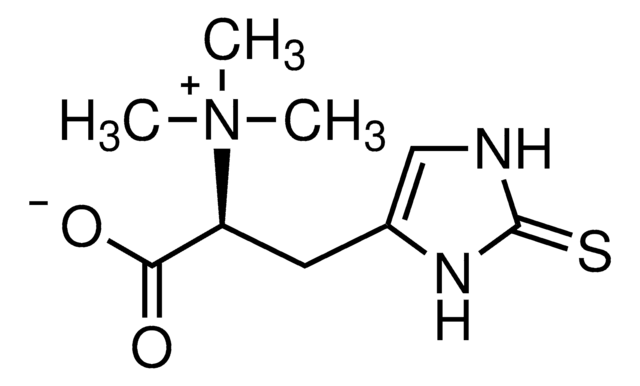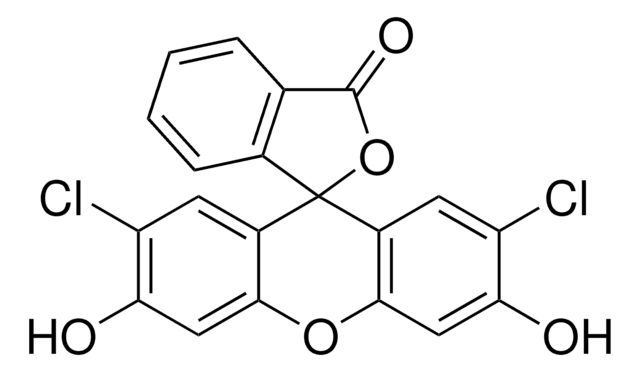Kluczowe dokumenty
37291
Dihydroethidium
BioReagent, suitable for fluorescence, ≥95% (HPCE)
Synonim(y):
2,7-Diamino-10-ethyl-9-phenyl-9,10-dihydrophenanthridine, 3,8-Diamino-5,6-dihydro-5-ethyl-6-phenylphenanthridine, Hydroethidine
About This Item
Polecane produkty
linia produktu
BioReagent
Poziom jakości
Próba
≥95% (HPCE)
Formularz
solid
rozpuszczalność
acetonitrile: soluble
methanol: soluble
fluorescencja
λex 358 nm; λem 461 nm
λex 392 nm; λem 410 nm in methanol
przydatność
suitable for fluorescence
temp. przechowywania
−20°C
ciąg SMILES
CCN1C(c2ccccc2)c3cc(N)ccc3-c4ccc(N)cc14
InChI
1S/C21H21N3/c1-2-24-20-13-16(23)9-11-18(20)17-10-8-15(22)12-19(17)21(24)14-6-4-3-5-7-14/h3-13,21H,2,22-23H2,1H3
Klucz InChI
XYJODUBPWNZLML-UHFFFAOYSA-N
Szukasz podobnych produktów? Odwiedź Przewodnik dotyczący porównywania produktów
Zastosowanie
Opakowanie
Powiązanie
Nie możesz znaleźć właściwego produktu?
Wypróbuj nasz Narzędzie selektora produktów.
Kod klasy składowania
11 - Combustible Solids
Klasa zagrożenia wodnego (WGK)
WGK 3
Temperatura zapłonu (°F)
Not applicable
Temperatura zapłonu (°C)
Not applicable
Środki ochrony indywidualnej
Eyeshields, Gloves, type N95 (US)
Wybierz jedną z najnowszych wersji:
Masz już ten produkt?
Dokumenty związane z niedawno zakupionymi produktami zostały zamieszczone w Bibliotece dokumentów.
Klienci oglądali również te produkty
Nasz zespół naukowców ma doświadczenie we wszystkich obszarach badań, w tym w naukach przyrodniczych, materiałoznawstwie, syntezie chemicznej, chromatografii, analityce i wielu innych dziedzinach.
Skontaktuj się z zespołem ds. pomocy technicznej
